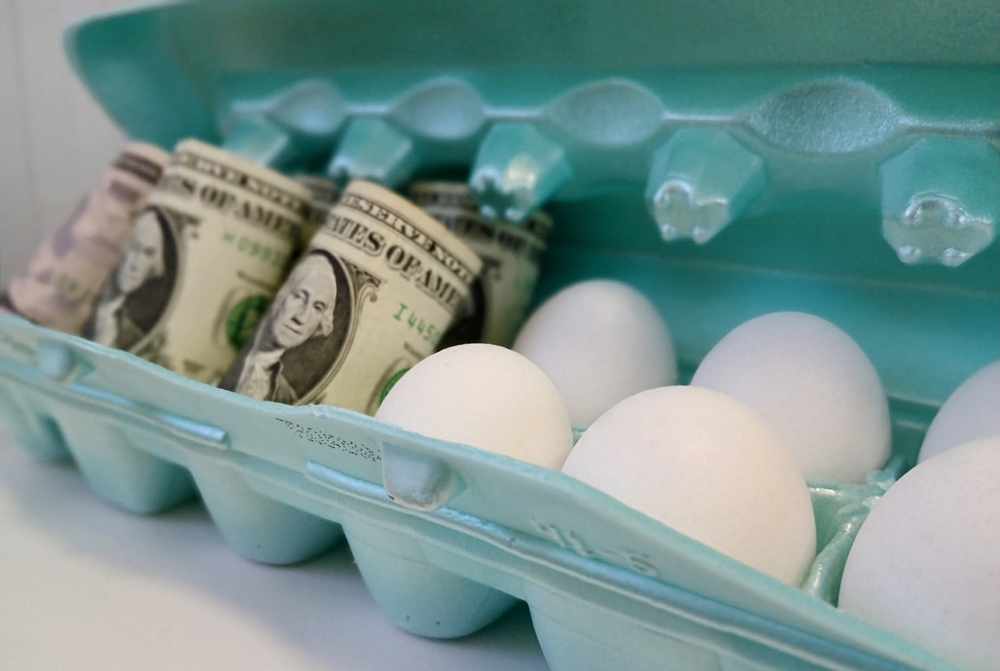Walk into any grocery store today and the message is clear before you reach the register. Prices are higher again. Carts hold less, bills grow larger, and paychecks no longer stretch as far as they once did.
Government reports confirm what most families already see. Food costs have climbed more than twenty percent in recent years, and some items have doubled. Eggs, beef, chicken, and bread all cost more each season. Rising costs for transport, feed, and fertilizer keep pushing prices upward.

Anyone can see where this trend leads. When the essentials rise faster than income, families start cutting back. Some skip meals or buy cheaper substitutes. Others turn to long-term food storage and self-reliance.
That is why many preppers aim to stay two harvests ahead. They keep enough food on hand to feed their families for twelve to eighteen months, even if supply chains falter or stores empty.
A single growing season cannot guarantee food security. Weather, pests, or illness can destroy a crop without warning. Staying two harvests ahead provides stability and freedom from immediate worry.
Food markets often take months to recover after a disruption. During the pandemic, shelves emptied overnight and prices spiked. Families with deep pantries remained calm because they already had what they needed.
A two-harvest supply gives time to recover from bad luck—a lost job, a failed crop, or another supply shock. It provides breathing room and peace of mind.
Start with Staples
A dependable pantry begins with the basics. Dry goods such as wheat, corn, beans, rice, and salt can feed a family for years when stored correctly. Use food-grade buckets with tight lids. Add oxygen absorbers or a small amount of dry ice before sealing to keep pests away.
The University of Georgia Extension suggests about 240 pounds of wheat, 75 pounds of powdered milk, 20 pounds of oil or fat, and 5 pounds of salt per adult each year. Store them in a cool, dark place off the floor to prevent moisture damage.
Add variety to maintain morale and nutrition. Rice, oats, pasta, lentils, and peanut butter add protein and calories. Honey, sugar, and salt keep indefinitely. These simple ingredients sustain both body and spirit.
Water matters most of all. A person can live for weeks without food but only days without water. Keep at least one gallon per person per day for two weeks, and store more when possible.
Canned foods are reliable, nutritious, and easy to store. Commercially canned goods remain safe for several years when kept below 85°F and above freezing. Rotate stock often to maintain taste.
Keep a mix of canned fruits, vegetables, meats, and fish. Boil home-canned items for ten minutes before eating to kill bacteria. Discard any can that shows swelling, rust, or leaks.
Dehydrated and Freeze-Dried Foods
Lightweight and long-lasting, dehydrated and freeze-dried foods are ideal for storage. Place them in Mylar bags with oxygen absorbers, then seal the bags inside sturdy buckets. Label each one clearly with contents and date.
Make sure foods are thoroughly dry, with less than ten percent moisture. Store them in a cool, dark location. Freeze-dried foods cost more upfront but can last up to twenty years and are easy to cook.
Shop Smart and Rotate
A strong pantry builds over time. Add supplies little by little. When prices drop, buy in bulk. Use airtight containers such as Mason jars or buckets with gamma-seal lids. Label everything clearly.
Store what your family actually eats. Buying foods no one likes only leads to waste. Keep ingredients that can be turned into meals instead of processed snacks. A bag of flour and a jar of yeast create far more options than boxed dinners.
Rotation keeps your supply fresh. Mark every package with the date. Move older items forward and use them first. Review supplies several times a year and restock as needed.
Include essential non-food items such as medicine, pet food, soap, and cleaning supplies.
Grow and Preserve Your Own Food
Even a small garden adds strength to your pantry. Herbs, greens, and root vegetables grow easily and provide fresh nutrition. Learn how to can, dehydrate, or pickle the harvest.
Buy produce in bulk during peak season and preserve it. Farmers’ markets often sell imperfect fruits and vegetables at low prices. Joining a community-supported agriculture program can help maintain a steady food supply.
Where local laws allow, keep a few hens. Fresh eggs add protein and independence from grocery stores.
Staying Ahead of the Curve
Food inflation shows no sign of vanishing. Prices may rise more slowly at times, but they rarely drop. Staying two harvests ahead remains a practical goal with lasting benefits.
Start small. Add one extra bag of beans this week. Next week, include rice or flour. Set aside water in sturdy containers. Plant a few seeds in a pot or garden bed. Each small effort builds security.

With time, those efforts create a buffer that shields you from sudden shortages and rising prices. You will have food you can trust and the skills to produce more.
Preparedness creates calm and confidence. A full pantry is one of the simplest, strongest defenses against uncertainty. Stay two harvests ahead, and you will stand steady no matter how high the prices climb.






Read full article here


